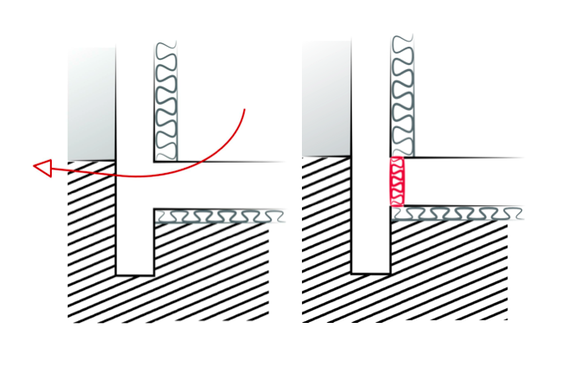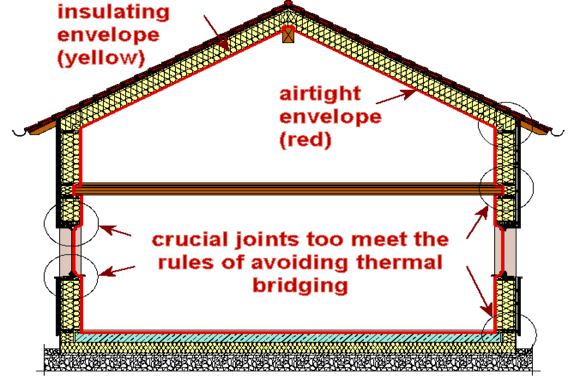
Thermal bridges are very common in old houses or houses with insufficient insulation. Thermal bridges cause the affected part of the construction to have a significantly higher heat transfer than the surrounding materials. This results in an overall reduction in the thermal performance of the construction. Partially insulated building elements are responsible for up to 35% of thermal losses and increased condensation that leads to mould growth.
Thermal Bridges: 3 Types
Thermal bridges can be classified into three main types (Leeds Beckett University: Low Carbon Housing Learning Zone):
- Repeating or quasi-homogeneous thermal bridges usually follow a regular pattern and are evenly distributed over an area of the thermal envelope
- Non-repeating or linear thermal bridges are often caused by discontinuities in the thermal envelope and occur at a specific point in the construction
- Geometrical thermal bridges are a result of the geometry or shape of the thermal envelope
The most common parts of construction where the thermal bridges can occur are:
- The parts of the building envelope that are exposed to the external environment and have a different thermal conductivity
- The parts where a change in the thickness of the fabric occurs
- The wall-floor-ceiling junctions of the building where there is a difference between internal and external areas
To avoid thermal bridging you should ensure that your house is properly insulated in the affected areas:
- Concrete balconies that extend the floor slab through the building envelope.
- Areas around glazing, window frames and rooflights
- Metal ties in masonry cavity external walls
- Ceiling joists in cold pitched roofs
- Ground floor joists in an insulated suspended timber ground floor
- Timber studwork and I-beams in timber frame constructions
- Mortar joints in an insulating block inner leaf
- Areas round loft hatches
- Wall/ roof junctions or wall/ floor junctions
- At the corner of an external wall
- Junctions between adjacent walls
Strategies For Avoiding Thermal Bridges:
- Apply a continuous layer of insulation (such as EPS or Mineral Wool around the external walls of your house
- Install insulation at the outside corner of your building where the walls and floor are connected
By reducing thermal bridges you will have saved a great amount of heat losses and energy needs of your home resulting in reduced energy bills and increased building lifespan.


